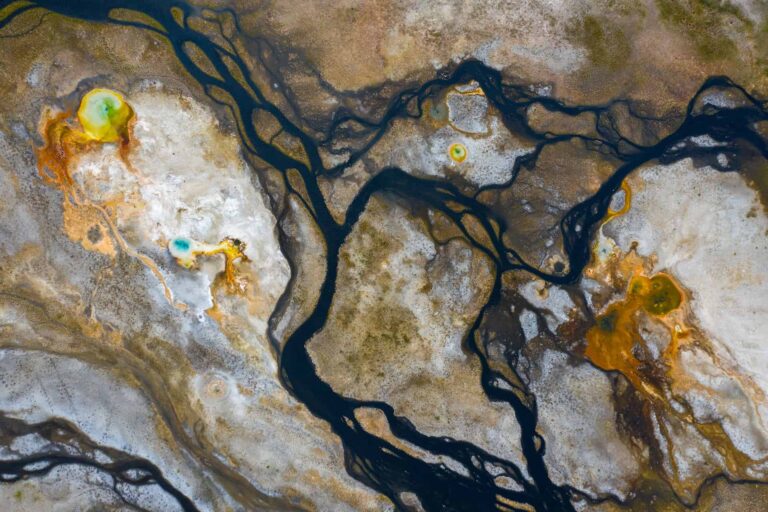Our civilization is running out of time to fully commit to stopping the emission of greenhouse gasses as our planet continues to overheat owing to anthropogenic climate change. To stop or at least slow down these changes, researchers have been searching for novel solutions. Therefore, In the face of worsening climate change and its devastating consequences, the concept of geoengineering has emerged as a potential solution to mitigate the impacts of global warming.
The earliest geoengineering ideas emerged in the middle of the 20th century. Such plans, which drew on technologies created during World War II, aimed to modify weather patterns to achieve more favorable regional climate conditions.
One of the most well-known methods is cloud seeding, which involves introducing particles of solid carbon dioxide or silver iodide into clouds that are predicted to contain rain to send rain to dry fields.
For decades, scientists have been issuing alerts about global warming. However, due to our society’s incapacity to switch from fossil fuels to renewable energy sources quickly enough, we must consider absurd measures to stop global warming.
But what is geoengineering and how can it assist us in addressing the climate crisis?
Table of Contents
Geoengineering: a definition
Geoengineering refers to deliberate and large-scale interventions in Earth’s natural systems to alter the climate. While the idea of intentionally manipulating the environment may sound promising, it also raises numerous ethical, environmental, and technical concerns.
It could also be defined as the name given to a group of cutting-edge technologies that have the potential to modify the environment and partially mitigate some of the effects of climate change.
Geoengineering encompasses two main approaches. Namely, solar radiation management (SRM) which is also called Solar geoengineering. And carbon dioxide removal (CDR) otherwise known as Carbon geoengineering.
SRM techniques aim to reduce the amount of sunlight reaching the Earth’s surface. Thereby counteracting the warming effect of greenhouse gases. CDR techniques, on the other hand, focus on removing carbon dioxide from the atmosphere to lower its concentration. Let’s take a closer look at this approach.
Solar geoengineering
Solar geoengineering, also known as solar radiation management (SRM), refers to proposed technologies and techniques aimed at mitigating climate change by reflecting a portion of the sun’s energy into space, thereby reducing global temperatures. While solar geoengineering has the potential to counteract some of the effects of climate change, it also carries certain risks and uncertainties.
To do this, enormous amounts of sulfur dioxide (SO2) would be released into the atmosphere from all around the world. It would provide us with some degree of climate control since the sprayed SO2 would lessen the strength of the greenhouse effect on Earth by reducing the quantity of UV radiation from the sun that strikes the surface of the planet.
Logistically, this would be accomplished by sending planes over the equator once or twice a year and spraying the SO2 aerosols into the atmosphere. Solar geoengineering has the advantage that we already have the planes and spraying technologies needed to put this solution into practice.
Carbon geoengineering or carbon dioxide removal (CDR)
The goal of carbon geoengineering is to eliminate carbon dioxide from the atmosphere. Thereby addressing the primary contributor to climate change the buildup of carbon dioxide in the atmosphere. It breaks the connection between emissions and concentrations in the cycle from temperatures to impacts.
Some proposed CDR methods include:
- Afforestation and reforestation: Planting trees on a large scale to absorb CO2 through photosynthesis;
- Direct air capture: Using large-scale machines to capture CO2 directly from the air and store it underground or utilize it for other purposes;
- Enhanced weathering: Accelerating the natural process of rock weathering to absorb CO2 from the atmosphere.
Benefits and risks of geoengineering
The following are the benefits and risks of geoengineering:
Potential benefits
- Rapid response: Geoengineering techniques offer the possibility of quick climate mitigation, providing relief from the immediate impacts of global warming;
- Cost-effective: Some forms of geoengineering may be economically viable compared to other climate change mitigation strategies;
- Global applicability: Geoengineering techniques have the potential to address climate change on a global scale. Thus regardless of regional disparities in emission levels.
Potential risks
- Unintended consequences: Manipulating Earth’s climate systems could result in unforeseen and adverse impacts on ecosystems, weather patterns, and regional climates;
- Ethical concerns: Geoengineering raises ethical dilemmas regarding decision-making, governance, and the potential for unequal distribution of benefits and harms;
- Incomplete understanding: Our current scientific knowledge about the complex interconnections of Earth’s systems has limits. Implementing large-scale geoengineering without comprehensive understanding could lead to irreversible damage.
The need for a balanced approach
As the concept of geoengineering gains attention, it is crucial to approach it with caution. Rather than relying solely on technological fixes, efforts should focus on reducing greenhouse gas emissions through sustainable practices and transitioning to clean energy sources. Geoengineering should be seen as a potential supplement to emission reduction, rather than a standalone solution.
To move forward, it is imperative to address key considerations, such as international governance frameworks, environmental assessments, and transparency. Collaborative research efforts, stakeholder engagement, and rigorous testing through small-scale pilot projects are essential to assess the feasibility, effectiveness, and potential risks associated with geoengineering techniques.
Overall, it is wise to spend money on research because it could help us in our battle in the years to come.
Read also: From carbon capture, to nuclear, to hydrogen: 10 ways to net zero emissions












